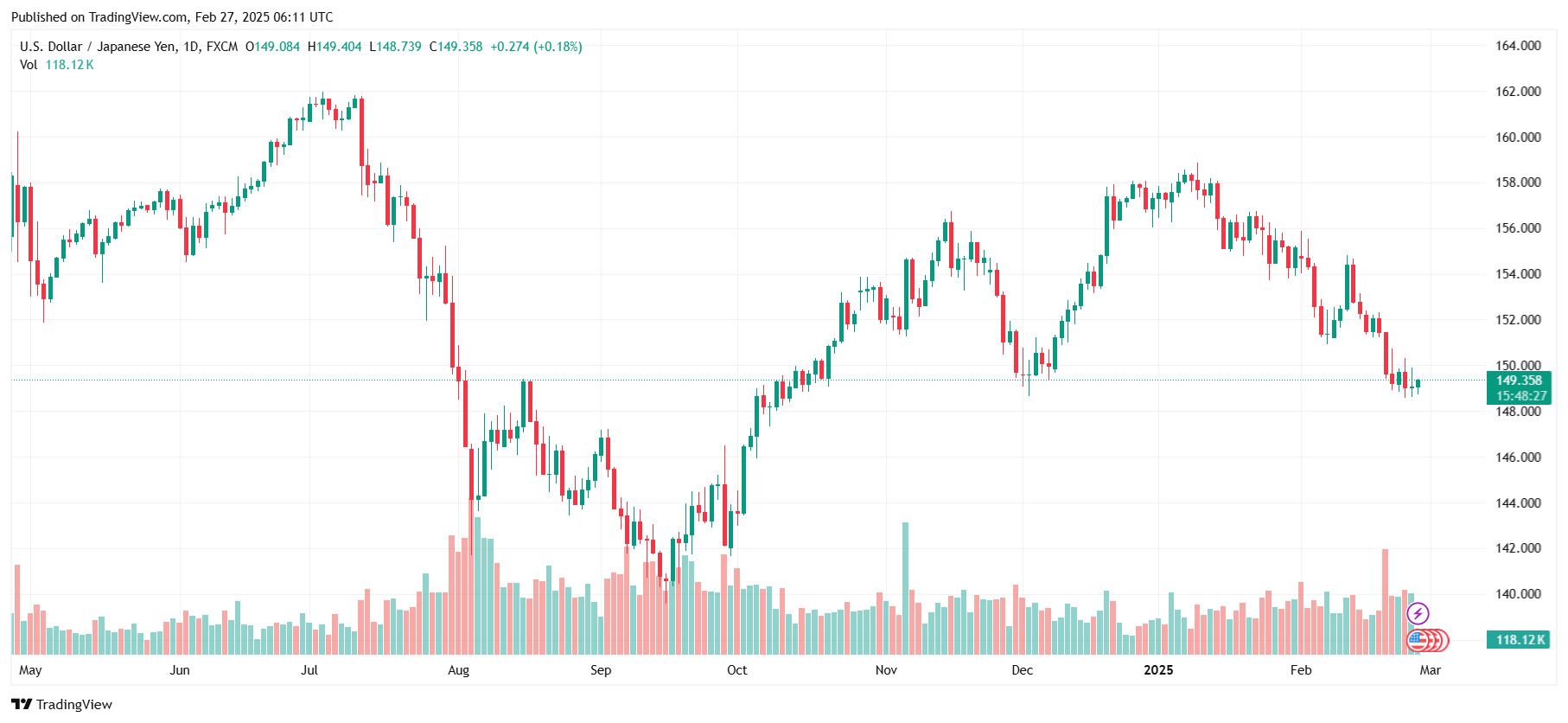In this morning's trading session - February 27, the JPY was still in a downward trend against the USD, but the decrease was controlled thanks to a slight recovery in Japanese government bond yields. Investors believe that the BoJ will continue to raise interest rates to control rapidly rising inflation in Japan. This helps the Yen maintain some strength, although BoJ Governor Kazuo Ueda had previously suggested the possibility of buying more government bonds to support the economy.
However, Donald Trump's proposal to increase import tariffs and optimistic market sentiment could reduce buying demand for the JPY. At the same time, the USD was supported by rising US bond yields, helping the USD/JPY pair stay above 149.00. Traders are awaiting upcoming US economic data on Thursday and speeches from the Federal Reserve (Fed) for clues on the next market trend.
Expectations about the BoJ's policy to help the Japanese Yen maintain its recovery momentum
Last week, BoJ Governor Kazuo Ueda said the central bank could buy more government bonds if long-term interest rates increase sharply, in order to maintain stability in the financial market.
In fact, Japanese government bond yields for 10 years have fallen to their lowest level since February 12, weakening the Yen and pushing the USD/JPY pair closer to 149.50 in this morning's trading session.
Data shows that inflation in Japan increased the fastest since the summer of 2023, making the market believe that the BoJ will continue to raise interest rates. This helps the JPY not sell off too much.
In the US, Donald Trump is pushing for measures to increase import tariffs, including an investigation into copper imports and considering imposing a 25% tax on goods from the European Union. He has also raised tariffs on Chinese goods and set a goal of implementing new tax policies against Canada and Mexico.
Meanwhile, the possibility of the Fed cutting interest rates is increasing after recent US economic data showed signs of a slowdown. This could cause the USD to lose some strength in the coming time. Atlanta Fed President Raphael Bostic also stressed that US inflation has shown signs of decreasing but is still not enough for the Fed to immediately ease monetary policy.
Investors are now awaiting important economic data for Japan on Friday, including industrial production, retail sales and Tokyo inflation. This information will help determine the direction of the BoJ monetary policy more clearly.
In addition, the US will also release the personal consumption expenditure (PCE) index - an important inflation measure that the Fed is closely monitoring. This data could strongly impact the USD and create new fluctuations for the USD/JPY pair.

According to Lao Dong, at 12:00 on February 27, the USD/JPY exchange rate is currently at 149.358, meaning 1 USD can be exchanged for about 149 JPY.











